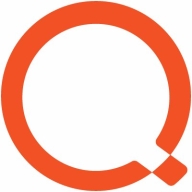

IDERA SQL Diagnostic Manager and Foglight for Databases compete in database management and performance monitoring. IDERA is preferred for cost-effectiveness and customer service, while Foglight is favored for its advanced features and long-term ROI.
Features: IDERA SQL Diagnostic Manager provides real-time monitoring, customizable alerts, and performance diagnostics. Its ease of use is a significant advantage. Foglight for Databases offers cross-platform support, predictive analytics, and comprehensive performance insights, making it suitable for detailed performance analysis.
Room for Improvement: IDERA could enhance its depth of performance insights and increase cross-platform compatibility. Expanding predictive analytics capabilities would be beneficial. Foglight could improve its deployment complexity and streamline the user interface for better usability. Reducing the learning curve required for full feature utilization is another area for development.
Ease of Deployment and Customer Service: IDERA SQL Diagnostic Manager is recognized for its swift deployment and robust customer support during setup. Its straightforward configuration process is appreciated by users. Foglight requires a more complex deployment with extensive configuration, but this is balanced by thorough documentation and efficient customer service that addresses detailed inquiries effectively.
Pricing and ROI: IDERA SQL Diagnostic Manager is valued for competitive setup costs and high ROI, being a cost-effective solution with comprehensive management tools. Foglight, despite its higher initial cost, delivers a compelling long-term ROI through its advanced analytics and in-depth database management. IDERA appeals to budget-focused buyers, while Foglight attracts those needing sophisticated performance insights.

Foglight for Databases offers comprehensive monitoring with real-time activity screens and adaptive baselines. It provides a 360-degree overview and efficient UI, requiring no custom scripts, aiding in proactive issue identification and resolution before impacting end users.
Foglight for Databases is a robust tool for monitoring across multiple platforms, including SQL and Oracle. It provides features like the "Morning Coffee" dashboard and SQL Performance Investigator, enabling effective workload analysis and historical investigation. Despite some challenges with sluggish performance on large data volumes and excessive non-critical alerts, it remains a preferred choice for its ability to support proactive management and resource planning. Users appreciate its centralized view of extensive database systems, enabling swift detection and resolution of issues in real-time.
What are the key features?Foglight is extensively implemented in industries managing extensive database systems, handling numerous servers to ensure availability and performance. It assists businesses in resolving blocking and locking deadlocks, crucial for maintaining smooth operations in production and development environments.
SQL Diagnostic Manager for SQL Server helps database administrators to find and fix SQL Server performance problems in physical, virtual, and cloud environments. Unlike its competition, it provides effective scalability, advanced SQL query analysis and optimization, prescriptive analysis with corrective SQL scripts, powerful automated alert responses, broad PowerShell integration, complete customization, and extensive support for current and legacy SQL Server and Windows.
We monitor all Database Development and Management reviews to prevent fraudulent reviews and keep review quality high. We do not post reviews by company employees or direct competitors. We validate each review for authenticity via cross-reference with LinkedIn, and personal follow-up with the reviewer when necessary.